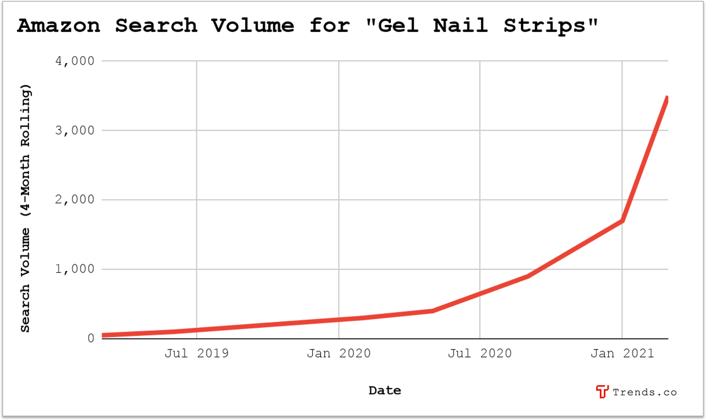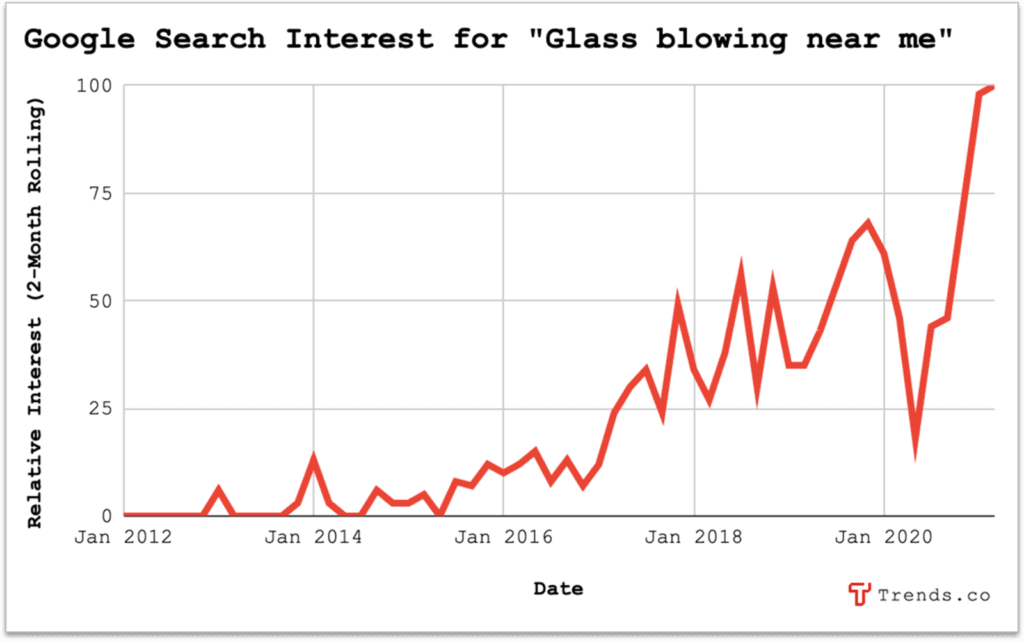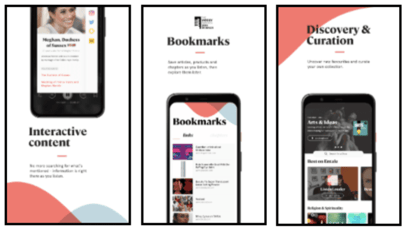nlopchantamang.com
Flares: Hibiscus, DIY Nails, and Glass Blowing
Amy McMillen

Source: Google Trends
Hibiscus Is Getting Hype
Ruby Hibiscus Water just launched, making a splash on Hypebeast with 2.7k+ hypes.
The flower (#hibiscus has 2.2m+ Instagram tags) -- known for its deep crimson color and health benefits -- has come a long way since Starbucks’ drop of the ready-to-drink (RTD) Very Berry Hibiscus in 2012.
Hibiscus is particularly popular in regions all over Africa, with countries like Kenya, Uganda, and Ghana having ~5x-8x more relative interest compared with the US, Canada, and Australia.
Taking drinks that are indigenous to a local culture mainstream is a long-lasting trend -- take matcha (Japan), turmeric lattes (India), and bubble tea (Taiwan).
Entrepreneurs are making a mint from hibiscus-related products. Per Jungle Scout data:
- These hibiscus dried flowers make $101k/mo
- This tea makes $73k/mo
- These wellness drops make $30k+/mo
With canned cocktails (6.6k searches/mo per Keywords Everywhere) and boozy tea (1.3k searches/mo) gaining popularity, stand-alone hibiscus drinks could do well in those categories, too.
It’s worth mentioning that Ruby’s founder, Noah Wunsch, named Ruby Hibiscus Water as “water” purely in name.
Like Ruby, repackaging teas into “water” could be good for brand recognition (think coconut water or, most recently, cactus water by Trendster Kun Yang).
Other stand-alone “water” flavors could include popular teas like lavender, mint, or ginger.
DIY Nails Are Nailing It

A recent IRI report shows that the nail category was one of only a few mass cosmetics areas to grow in 2020, including:
- Artificial nails: +40.2%
- Nail treatment: +18.6%
- Nail polish: +14.5%
Painting nails yourself still takes a lot of time and skill, so it’s no surprise that artificial nails and press-on gels are taking off.
Though accelerated by COVID for obvious reasons, at-home manicure kits have been steadily gaining traction over the years.
Static Nails, a brand launched in 2016 out of founder Alexis Irene’s college dorm room, earned $500k in sales within the first 6 months. That number has since snowballed into an estimated $5m to $10m/yr in sales.
Subscription boxes that serve the latest TikTok #nailtrends (104.3m+ views) would do well. According to a 2021 Pinterest report, Gen Z inspired +21x in searches for “Indie nails” and +9x for “Smiley face nails.”
There’s also room in the DIY nail industry to capitalize on other trends, including male grooming and 3D printing.
ManiMe, which 3D scans your nails to produce custom-fit, stick-on gels, raised $8.6m and was expected to surpass $3m in sales in 2020.
Glass Blowing Is Blowing Up

Glass blowing, the activity of forming glass with a torch and pipe, is another trend that’s blowing up.
Nearly 50k people search for “glass blowing” each month, double the number since October 2020, per Keywords Everywhere. Other related searches:
- “Glass blowing near me”: 12.1k searches/mo
- “Glass blowing kit”: 3.6k
- “Glass blowing torch”: 2.9k
The activity is also bubbling up on social media -- #Glassblowing has 1.1m+ posts on Instagram and 1B+ views on TikTok.
One glass artist, Jerrad Santmyer, has 35k+ followers and a daily auction for his miniature glass creations, which are consistently sold out.
While glass-blowing equipment can be expensive, there are other ways to capitalize on the trend. Take advantage of the rise in breathwork and start an app for breathing art creations (Chihuly is one attempt, but has a lot of room for improvement).
A quick scroll through related subreddits (r/glassheads: 100k+ members, r/glassblowing: 20.3k+, and r/lampwork: 10.4k+) shows that glass blowing is riding the wave of legalized recreational cannabis.
Dispensaries (7.5k+ in the US, and growing) could partner with local glass artists, selling pipes, bowls, and more.


Leave a Comment